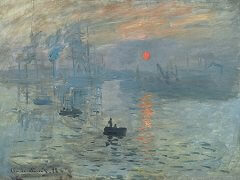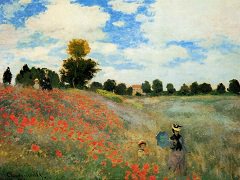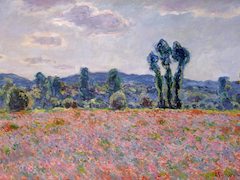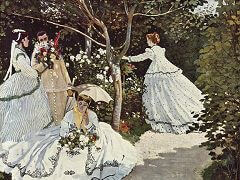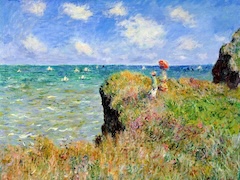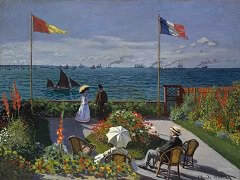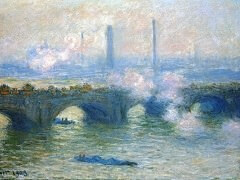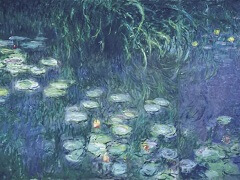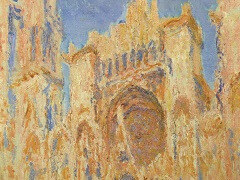La Japonaise, 1857 by Claude Monet

Monet participated in the widespread enthusiasm for Japanese art and culture that swept Europe in the 1860s and 1870s, a phenomenon known as japonisme. With the opening of Japan's ports to Western trade in 1854, Japanese textiles, porcelain, and other luxury goods flooded the European market, along with distinctive, brightly colored woodblock prints depicting everyday life in Japan. Monet was an early and prolific collector of these prints, and also owned several Japanese theatrical costumes, in one of which Camille seems to have posed for this picture.
Included in the second Impressionist Exhibition, this work was an abrupt departure from the style that Monet had been cultivating over the preceding decade. At the time it caused a sensation. One critic praised its "solid coloring" and "emphatic impasto".
Monet was very poor at this time, and one theory holds that he chose deliberately to paint a conventionally posed painting that would have a high chance of selling, with perhaps the added benefit of attracting a new patron. Monet had a strong commercial instinct that lies behind some of his choices of subject matter and style. The careful composition and posing of Camille in this painting lacks all the spontaneity that Monet had been looking to capture in other works. Camille is not true to life, as she is wearing a blond wig. The robe itself is magnificent, and Monet's depiction of the samurai warrior contrasts with the sweetness of Camille's face.
Monet's interest in Japanese art that had influenced some of his earlier work was obviously still strong at this time, and influenced by Monet, Van Gogh also created his own version of Japonaiserie Oiran.

